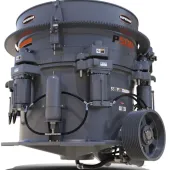PLA investment in new conveyor at Northfleet

Port of London Authority investing more than £3 million in new conveyor system at CEMEX terminal
THE first investment by the Port of London Authority (PLA), as part of its recently launched Investment Plan, will be in partnership with CEMEX UK to improve ship unloading infrastructure at the company’s Northfleet terminal, on the river Thames.
CEMEX Marine dredgers bring sand and gravel from the North Sea and other offshore locations into three wharves along the Thames, including Northfleet, primarily for use in the London construction market.
Under the agreement, the PLA will be investing more than £3 million in the installation of a new conveyor system to improve cargo discharge performance at the Northfleet site, which handles around 500,000 tonnes of sand and gravel each year.
The PLA’s Investment Plan is aimed at diversifying the Authority’s income streams and delivering the goals of its Thames Vision, which targets greater river use alongside an improving environment.
The Plan will support: commercial investments that support river and port use; long-term investments that deliver public benefits; and public benefit investment with no financial return.
PLA chairman Christopher Rodrigues CBE (right of photo) said: ‘We have built up a strategic cash reserve over many years to provide us with scope to make beneficial investments. We’re going to turn that reserve to active use, sustaining and growing river use and improving the environment.
‘The Thames Vision sets out really ambitious goals and this is us doing our bit to kick-start development and growth.’
CEMEX Marine director Laurence Dagley commented: ‘We welcome the opportunity to partner with the PLA to improve cargo handling on the Thames. London is an important market for us, and this investment will provide a platform for continued use and future growth. We look forward to getting the new equipment up and running.’
He added: ‘The capital needs approximately 10 million tonnes of sand, gravel and crushed rock every year to build, maintain and improve housing, buildings and infrastructure. The use of water to transport building materials to the heart of the city reduces the need for long-distance lorry movements, with every dredger reducing the need for 250 lorries on our busy roads.’









